- Головна
- Готові шкільні презентації
- Презентація на тему «Canada» (варіант 7)
Презентація на тему «Canada» (варіант 7)
339
Слайд #1
Canada
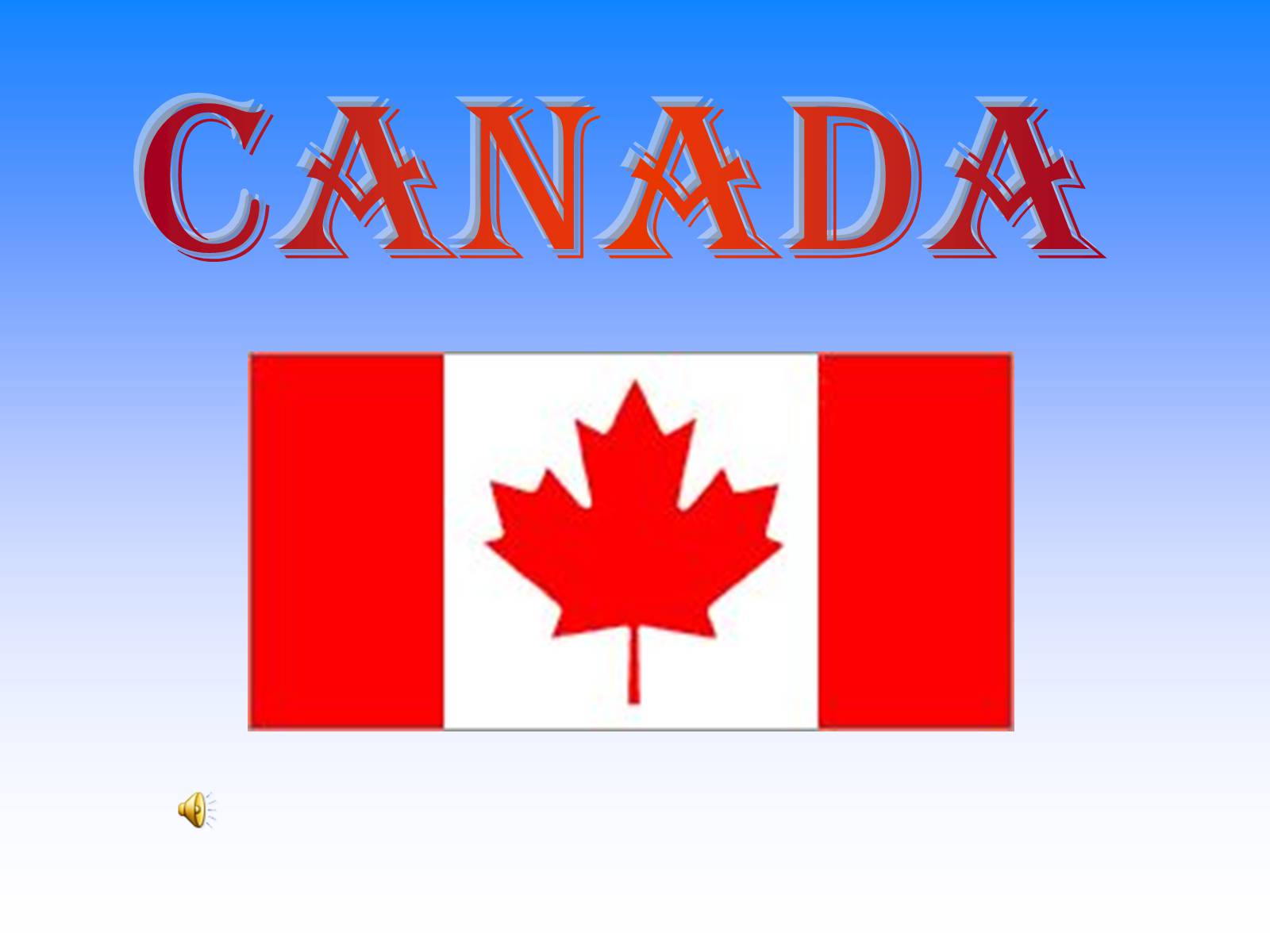
Слайд #2
Map of Canada
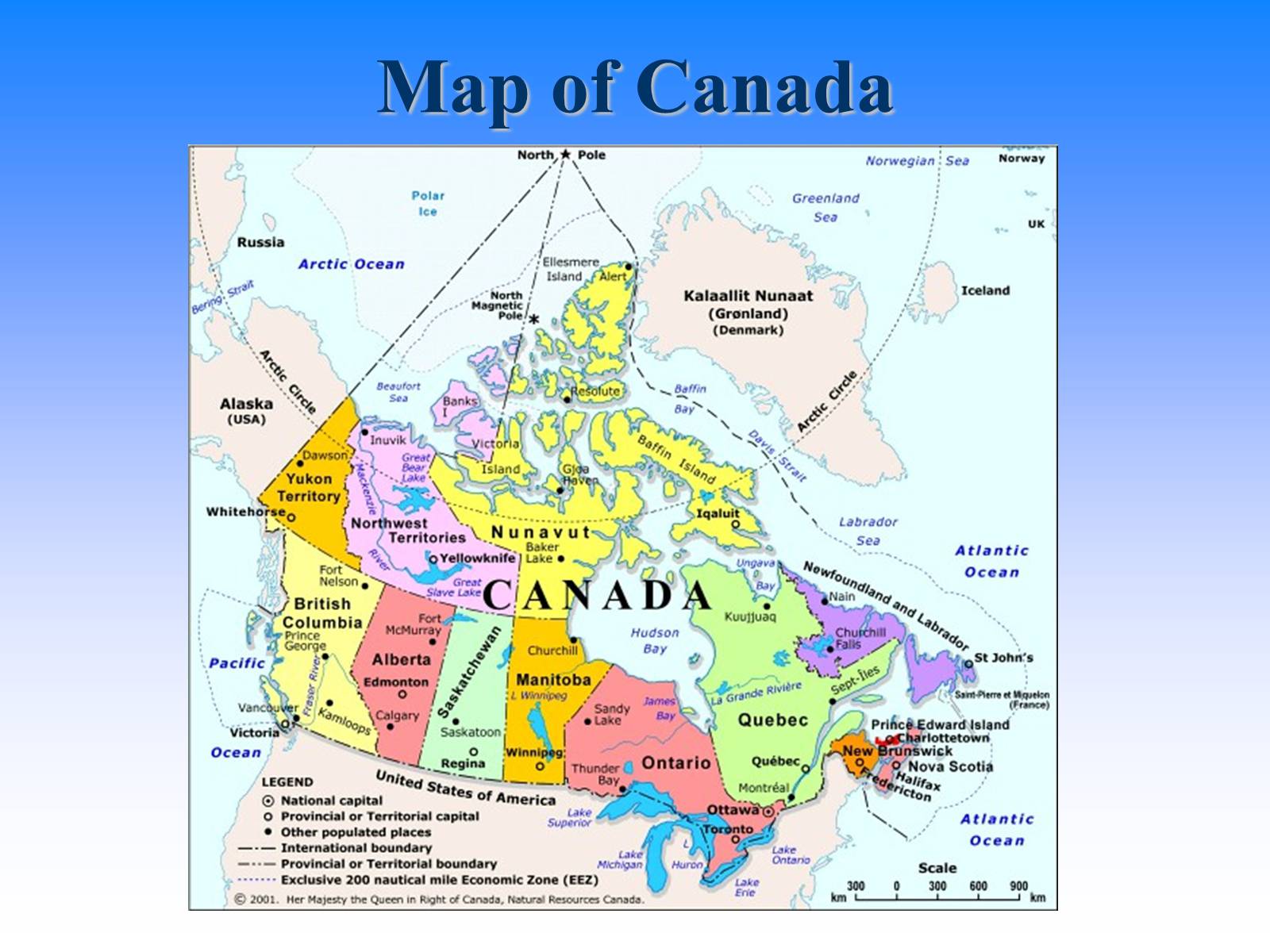
Слайд #3
Royal Union flag
fleur-de-lis
St. George's Cross
First Canadian Flags
The first flag known to have flown in Canada was the St George's Cross carried by John Cabot when he reached Newfoundland in 1497. In 1534, Jacques Cartier planted a cross in Gaspé bearing the French royal coat of arms with the fleurs-de-lis. His ship flew a red flag with a white cross, the French naval flag at the time. New France continued to fly the evolving French military flags of that period
fleur-de-lis
St. George's Cross
First Canadian Flags
The first flag known to have flown in Canada was the St George's Cross carried by John Cabot when he reached Newfoundland in 1497. In 1534, Jacques Cartier planted a cross in Gaspé bearing the French royal coat of arms with the fleurs-de-lis. His ship flew a red flag with a white cross, the French naval flag at the time. New France continued to fly the evolving French military flags of that period
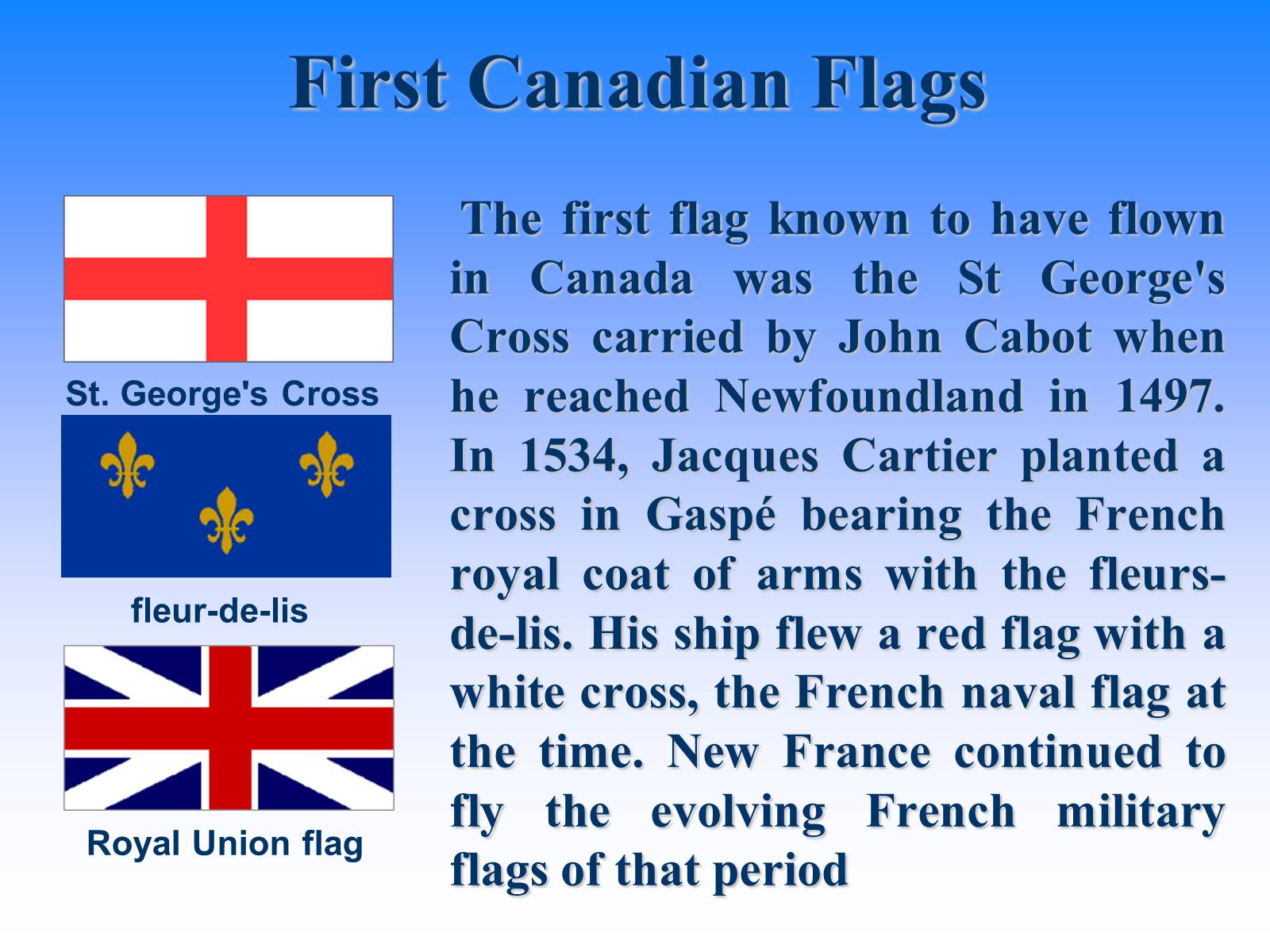
Слайд #4
Union Jack
Red Ensign
Maple Leaf
First Canadian Flags
For nearly a century Canada had no distinctive national flag. Each time Canadians suggested a new symbol to replace the Canadian Red Ensign, modeled after a British naval flag, there was controversy. Maple leaves, beavers, crosses, crowns — propositions that went nowhere. In 1964 Prime Minister Lester B. Pearson said he'd introduce a new national flag. But Opposition leader John Diefenbaker and the Royal Canadian Legion wanted to stick with the Red Ensign. Everyone had an opinion before Canada finally chose the red and white flag with the maple leaf.
Red Ensign
Maple Leaf
First Canadian Flags
For nearly a century Canada had no distinctive national flag. Each time Canadians suggested a new symbol to replace the Canadian Red Ensign, modeled after a British naval flag, there was controversy. Maple leaves, beavers, crosses, crowns — propositions that went nowhere. In 1964 Prime Minister Lester B. Pearson said he'd introduce a new national flag. But Opposition leader John Diefenbaker and the Royal Canadian Legion wanted to stick with the Red Ensign. Everyone had an opinion before Canada finally chose the red and white flag with the maple leaf.
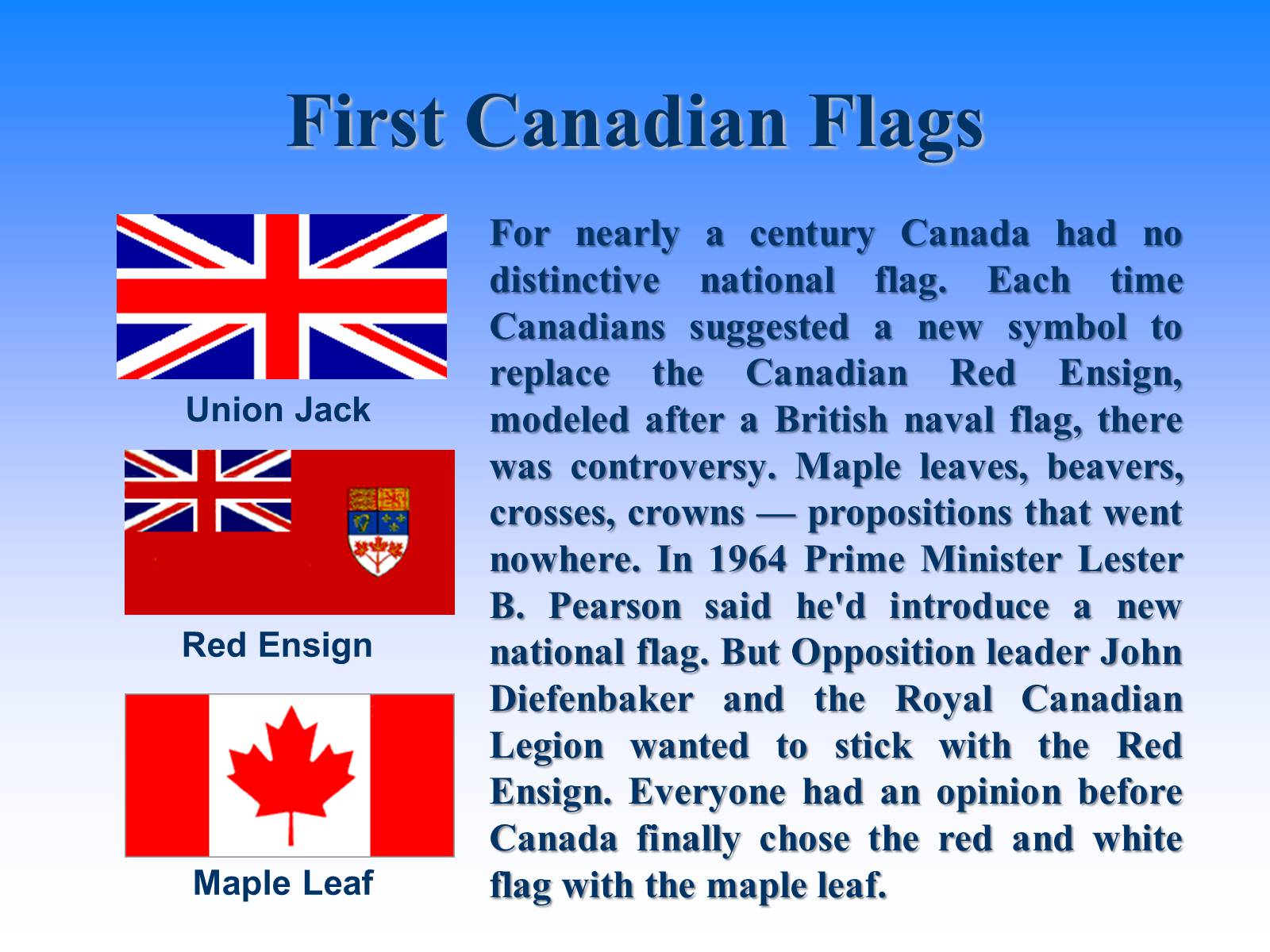
Слайд #5
The Coat of Arms
The arms of Canada were adopted in 1921 by proclamation of King George V. In 1994, the arms were augmented with a ribbon displaying the motto of the Order of Canada, DESIDERANTES MELIOREM PATRIAM (They desire a better country)
The design of the arms of Canada reflects the royal symbols of the United Kingdom and France (the three lions of England, the lion of Scotland, thefleurs-de-lis of France and the rIish harp of Tara).
The arms of Canada were adopted in 1921 by proclamation of King George V. In 1994, the arms were augmented with a ribbon displaying the motto of the Order of Canada, DESIDERANTES MELIOREM PATRIAM (They desire a better country)
The design of the arms of Canada reflects the royal symbols of the United Kingdom and France (the three lions of England, the lion of Scotland, thefleurs-de-lis of France and the rIish harp of Tara).
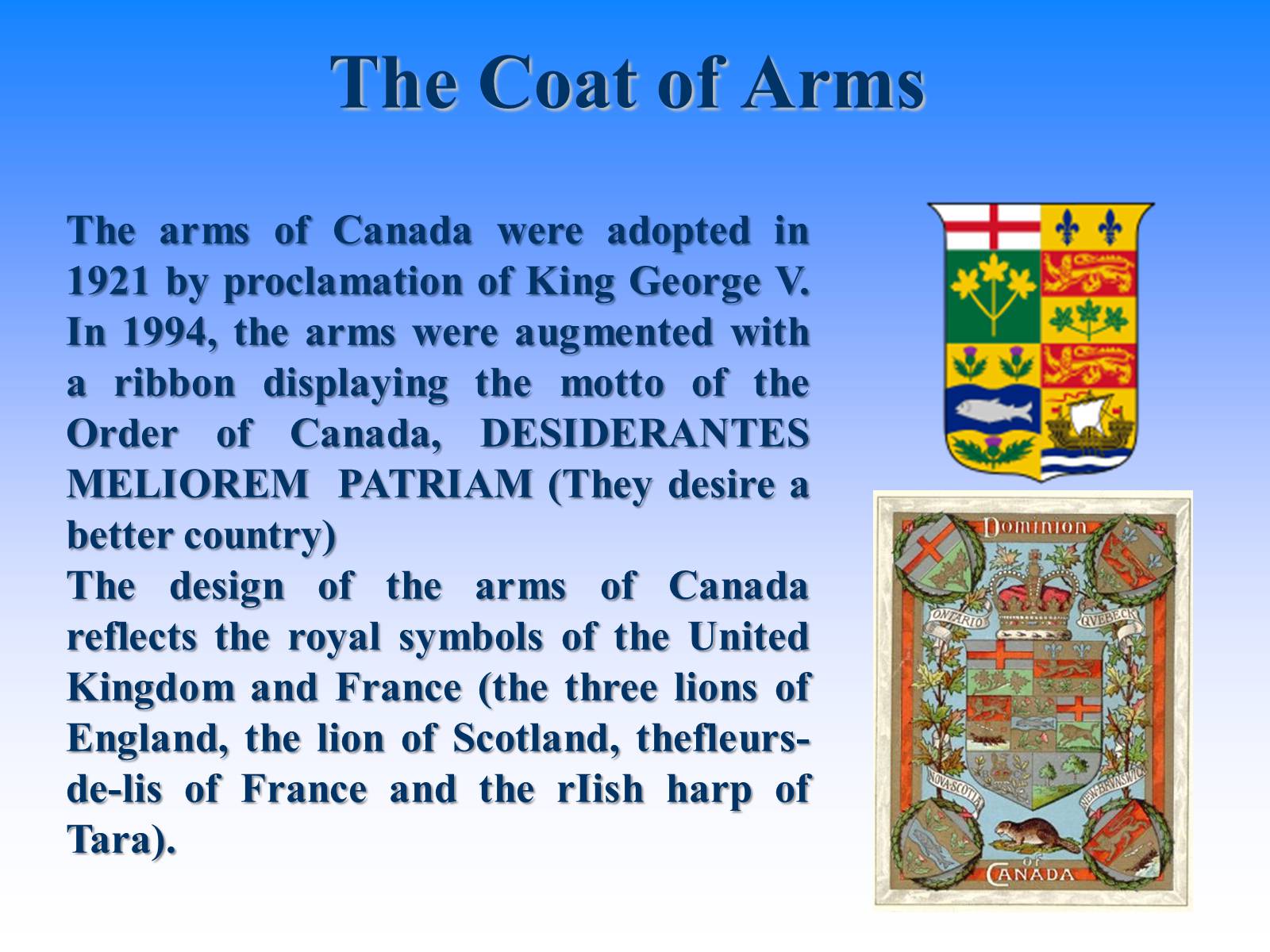
Слайд #6
The Coat of Arms
On the bottom portion of the shield is a sprig of three Canadian maple leaves representative of Canadians of all origins. The coat of arms is supported by the lion of England holding the Royal Union Flag and the unicorn of Scotland carrying the flag of Royal France. The crest above the shield features a crowned lion holding a red maple leaf. At the base of the arms are the floral emblems associated with the Canadian Monarchy: the English rose, the Scottish thistle, the French lily and the Irish shamrock.
On the bottom portion of the shield is a sprig of three Canadian maple leaves representative of Canadians of all origins. The coat of arms is supported by the lion of England holding the Royal Union Flag and the unicorn of Scotland carrying the flag of Royal France. The crest above the shield features a crowned lion holding a red maple leaf. At the base of the arms are the floral emblems associated with the Canadian Monarchy: the English rose, the Scottish thistle, the French lily and the Irish shamrock.
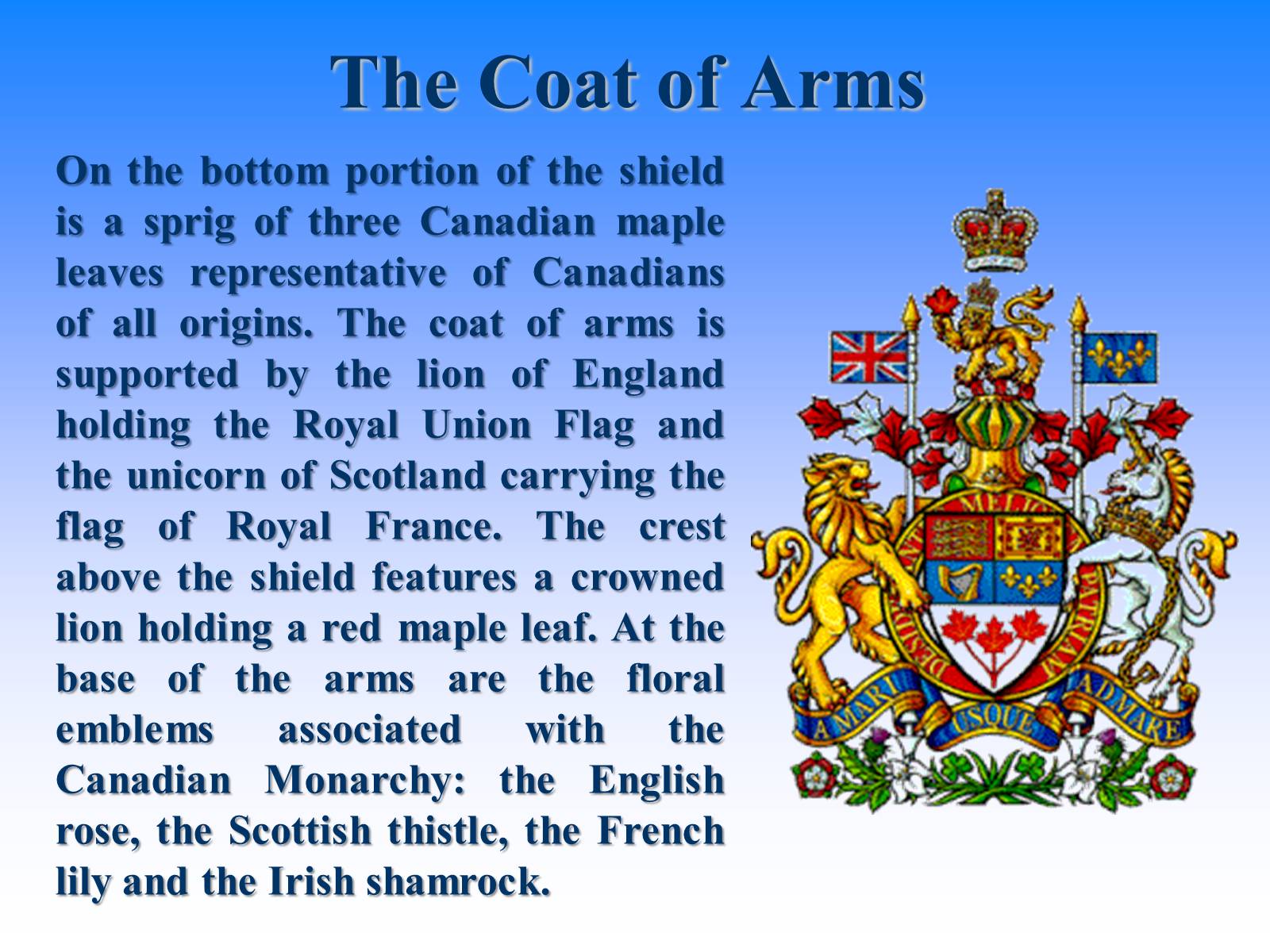
Слайд #7
The Coat of Arms
The Royal Crown at the top indicates that these are the Arms of the Sovereign in right of Canada, commonly called "the Royal Arms of Canada" or "the Arms of Canada".
The Royal Crown at the top indicates that these are the Arms of the Sovereign in right of Canada, commonly called "the Royal Arms of Canada" or "the Arms of Canada".
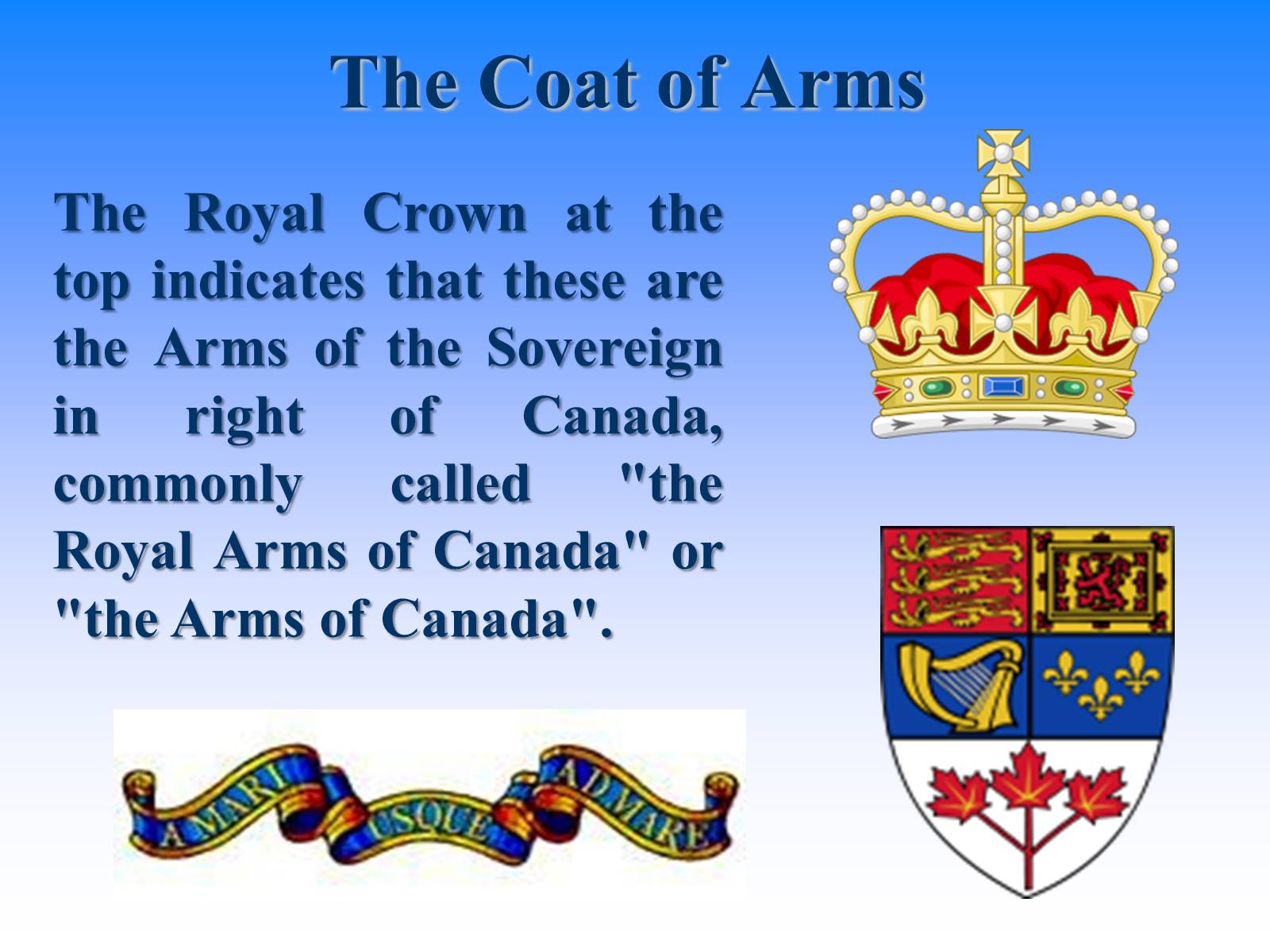
Слайд #8
Symbols of Canada
The Flag
Canadian Colours: Red and white are the official colours of Canada. They were designated Canada's official colours by King George V on 21 November, 1921, in the proclamation of the Royal Arms of Canada.
The Great Seal of Canada: The Great Seal of Canada is used on all state documents such as proclamations and commissions of cabinet ministers, senators, judges and senior government officials.
The Flag
Canadian Colours: Red and white are the official colours of Canada. They were designated Canada's official colours by King George V on 21 November, 1921, in the proclamation of the Royal Arms of Canada.
The Great Seal of Canada: The Great Seal of Canada is used on all state documents such as proclamations and commissions of cabinet ministers, senators, judges and senior government officials.
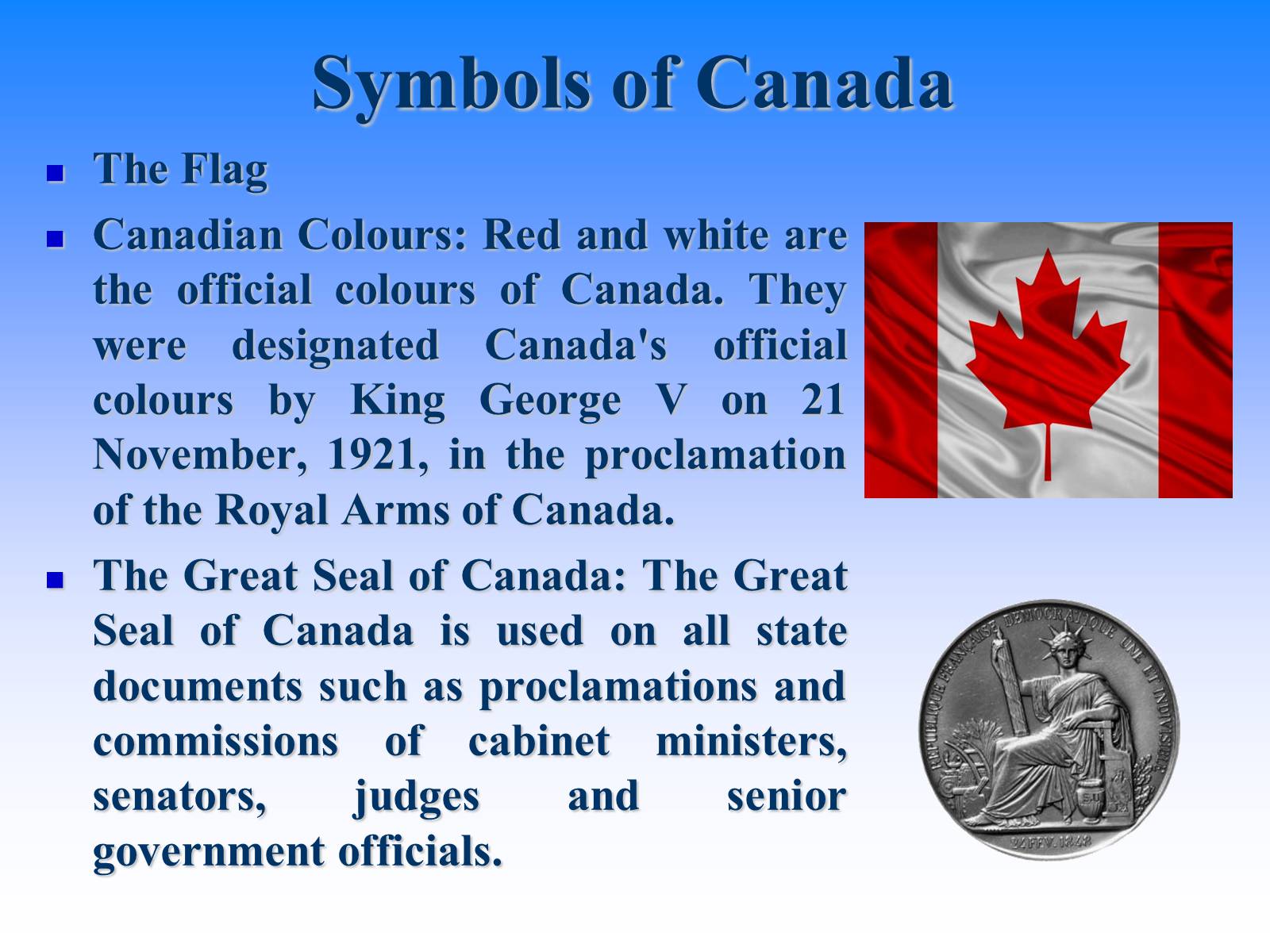
Слайд #9
Symbols of Canada
The Maple Leaf and Tree: The maple leaf is Canada's most prominent symbol, recognized as Canadian all around the world. According to many historians, the maple leaf began to serve as a Canadian symbol as early as 1700. The maple tree was officially proclaimed the national arboreal emblem of Canada on 25 April, 1996.
The Beaver
The Maple Leaf and Tree: The maple leaf is Canada's most prominent symbol, recognized as Canadian all around the world. According to many historians, the maple leaf began to serve as a Canadian symbol as early as 1700. The maple tree was officially proclaimed the national arboreal emblem of Canada on 25 April, 1996.
The Beaver
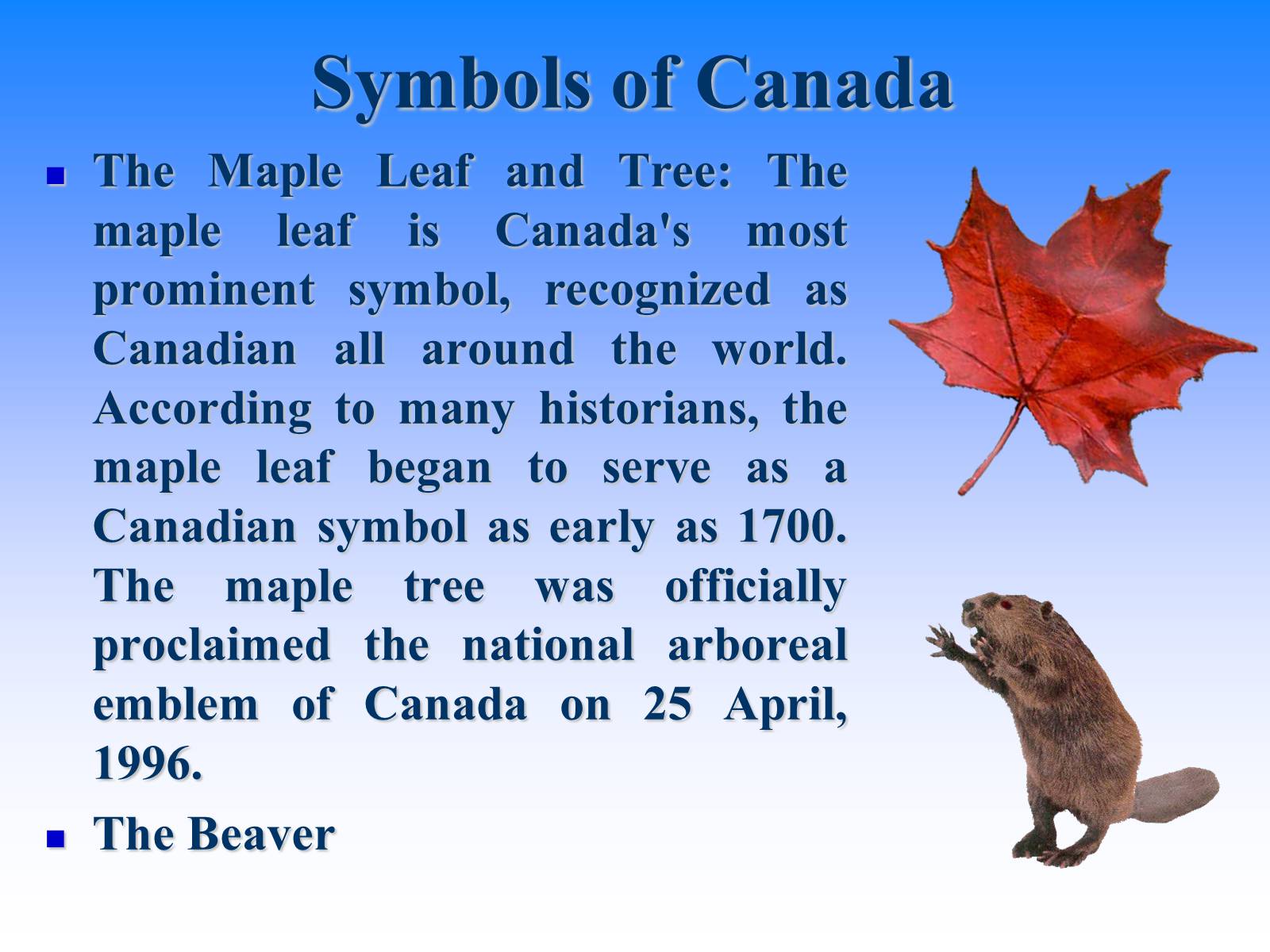
Слайд #10
New Brunswick
Canada's Provinces
Newfoundland
Prince Edward Island
Nova Scotia
Quebec
Canada's Provinces
Newfoundland
Prince Edward Island
Nova Scotia
Quebec
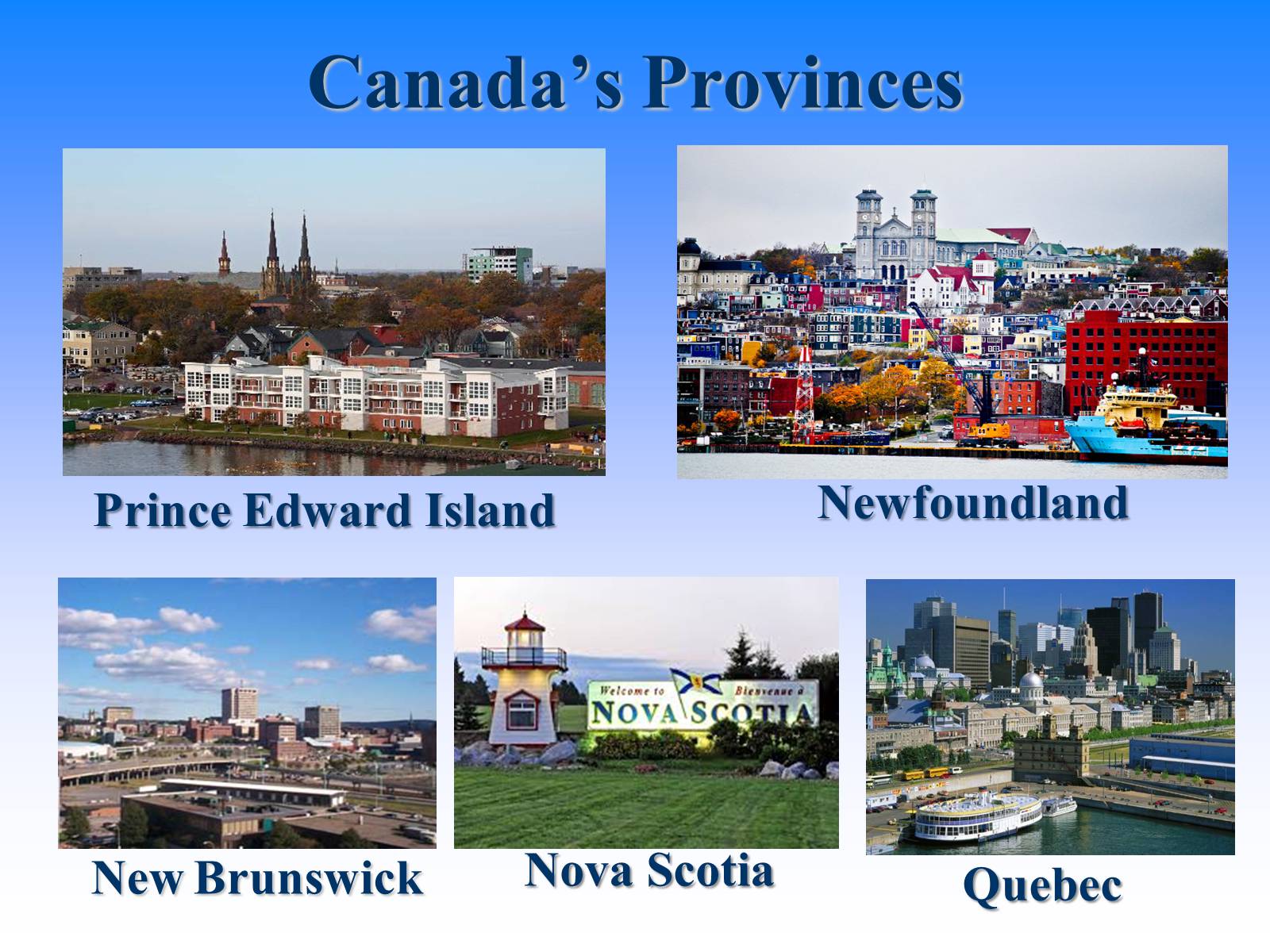
Слайд #11
Canada's Provinces
Ontario
Manitoba
Saskatchewan
Alberta
British Columbia
Ontario
Manitoba
Saskatchewan
Alberta
British Columbia
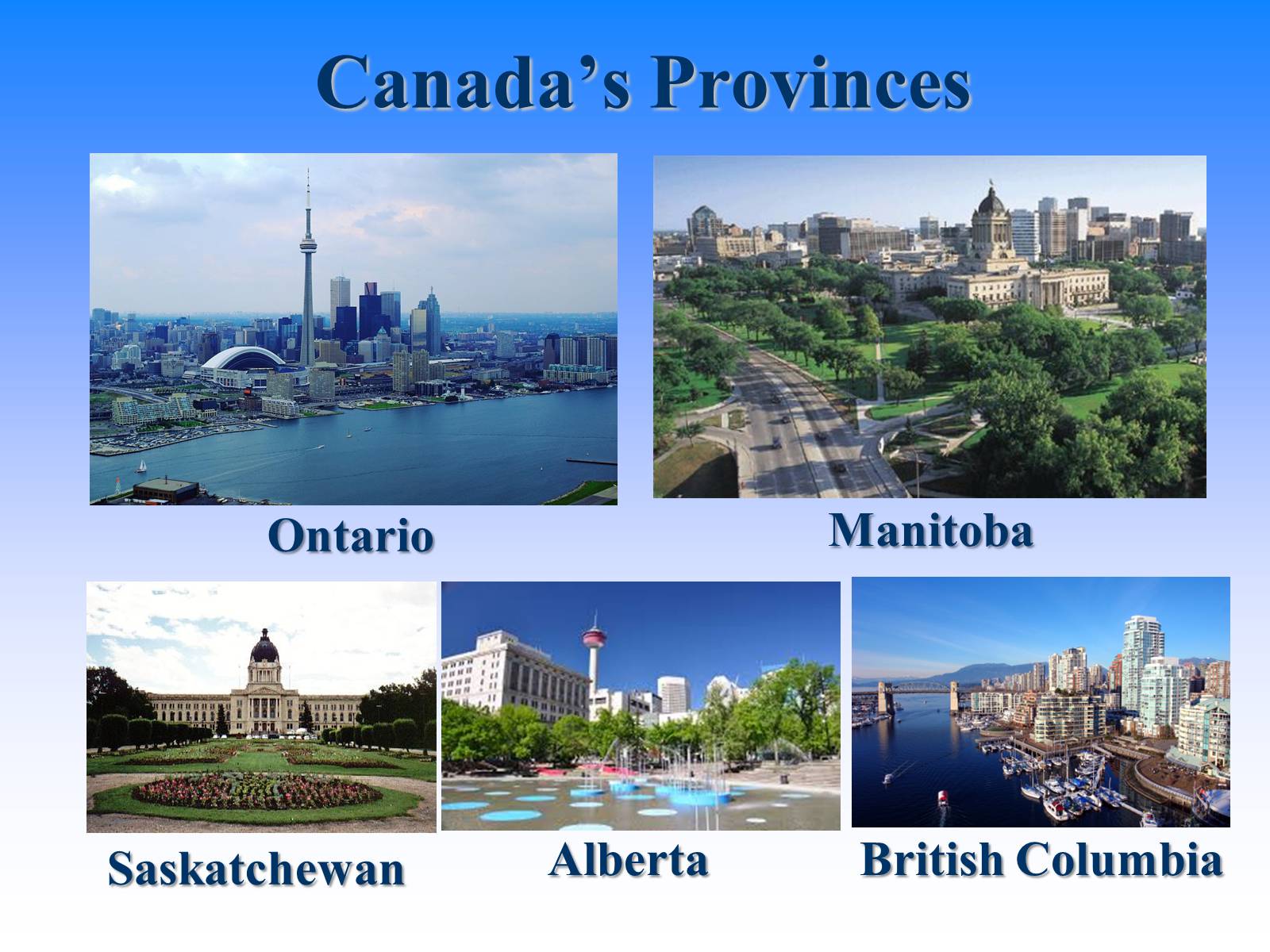
Слайд #12
Nunavut
Canada's Territories
Yukon
Northwest Territories
Canada's Territories
Yukon
Northwest Territories
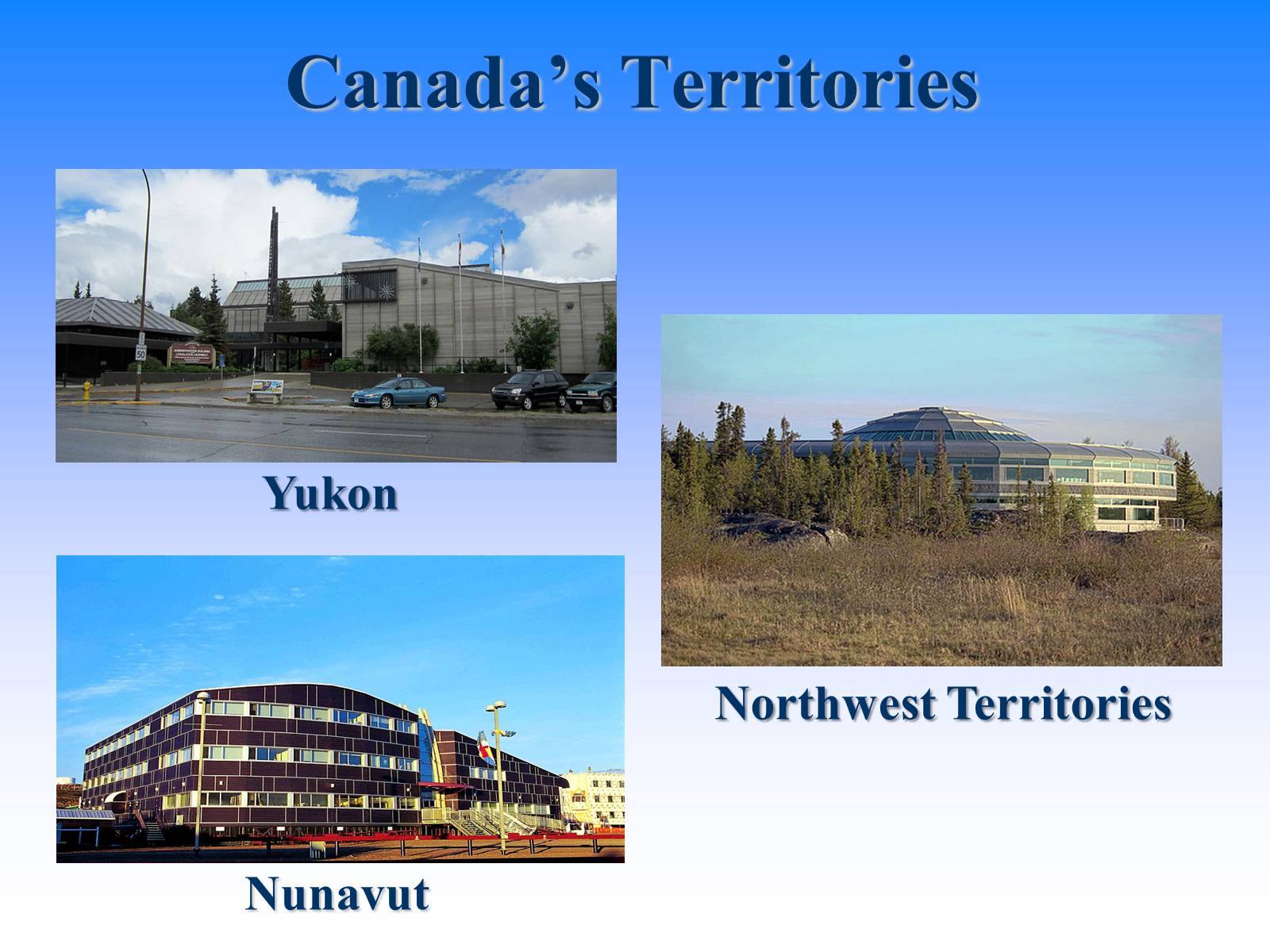
Слайд #13
Origin of the Name – Canada
The explorer depicted in the image is Jacques Cartier .
The Huron-Iroquois word for «village» or «settlement» was kanata.
The first use of "Canada" as an official name came in 1791 when the Province of Quebec was divided into the colonies of Upper and Lower Canada.
The explorer depicted in the image is Jacques Cartier .
The Huron-Iroquois word for «village» or «settlement» was kanata.
The first use of "Canada" as an official name came in 1791 when the Province of Quebec was divided into the colonies of Upper and Lower Canada.
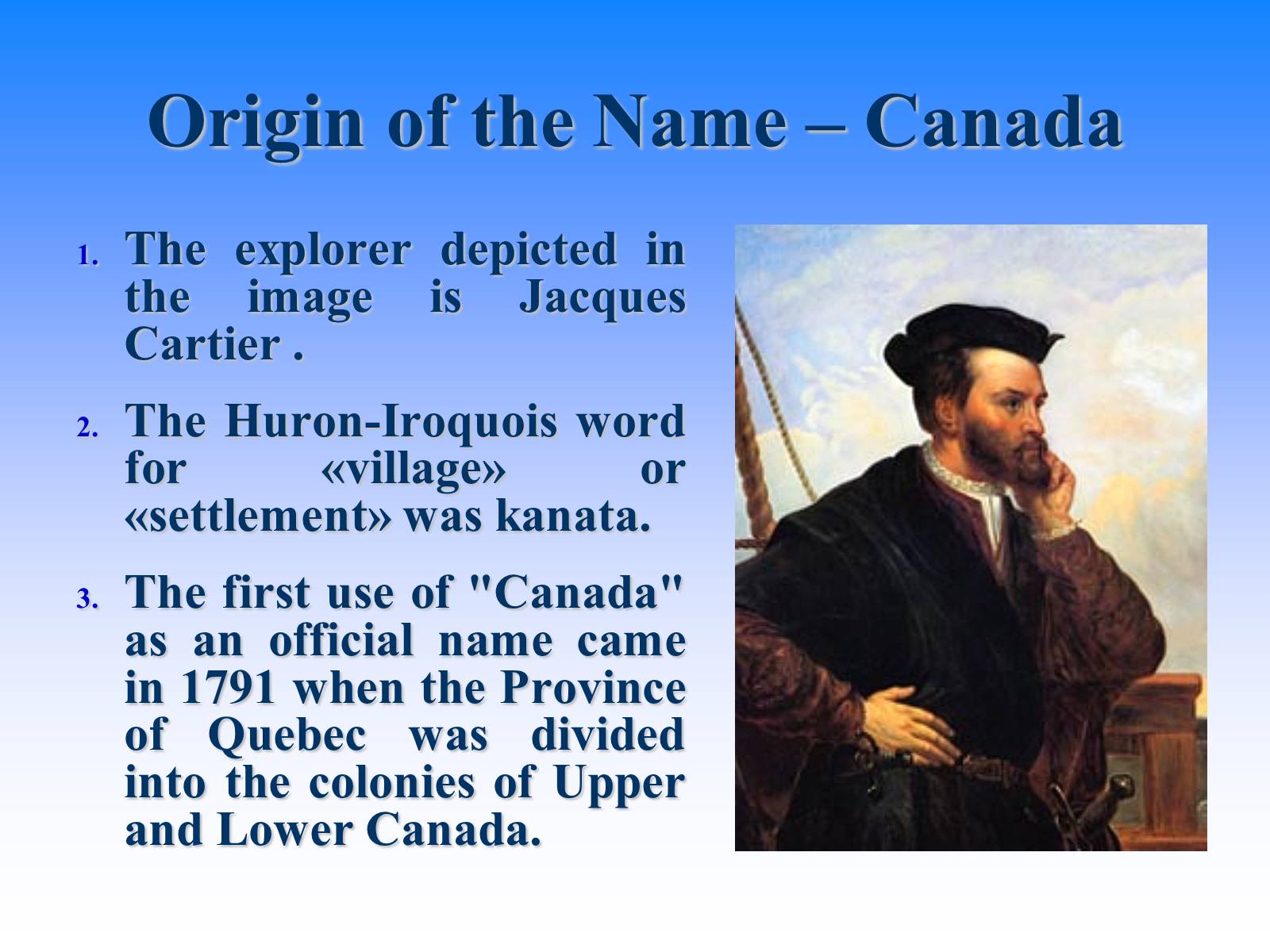
Слайд #14
The Parliament Building
The Centre Block
The House of Commons
The Senate Chamber
The Library of Parliament
The Centre Block
The House of Commons
The Senate Chamber
The Library of Parliament

Слайд #15
Thank You for Attention!
